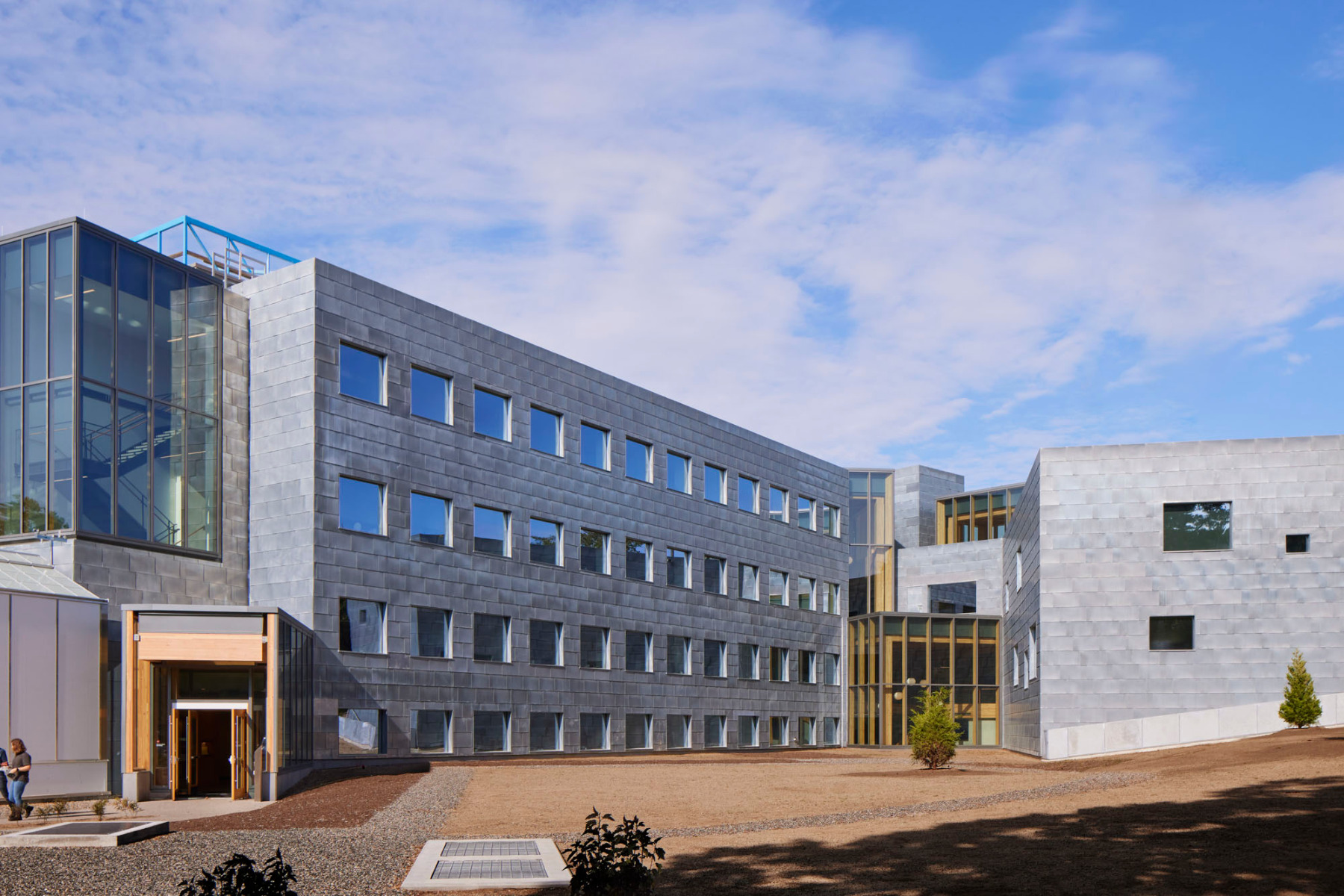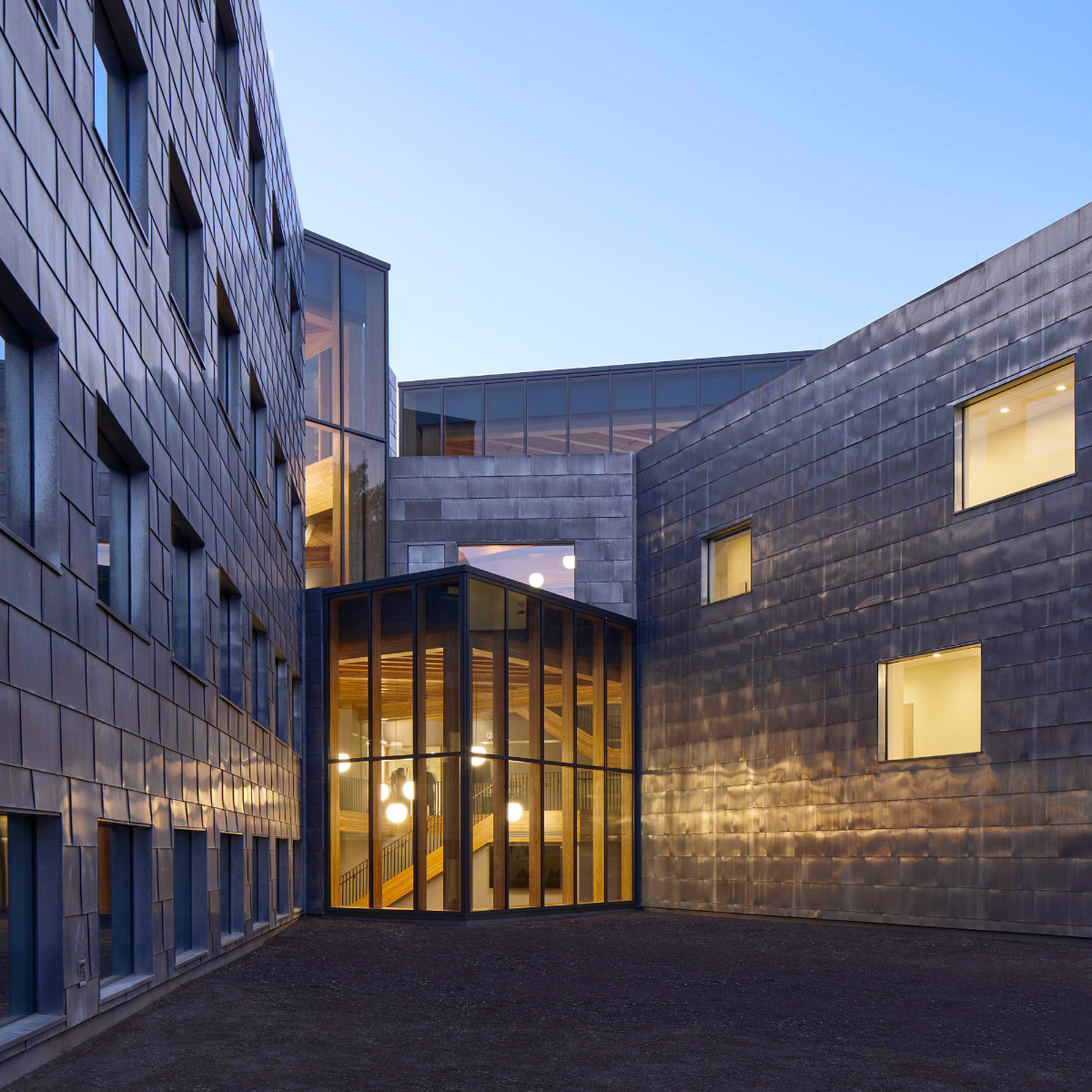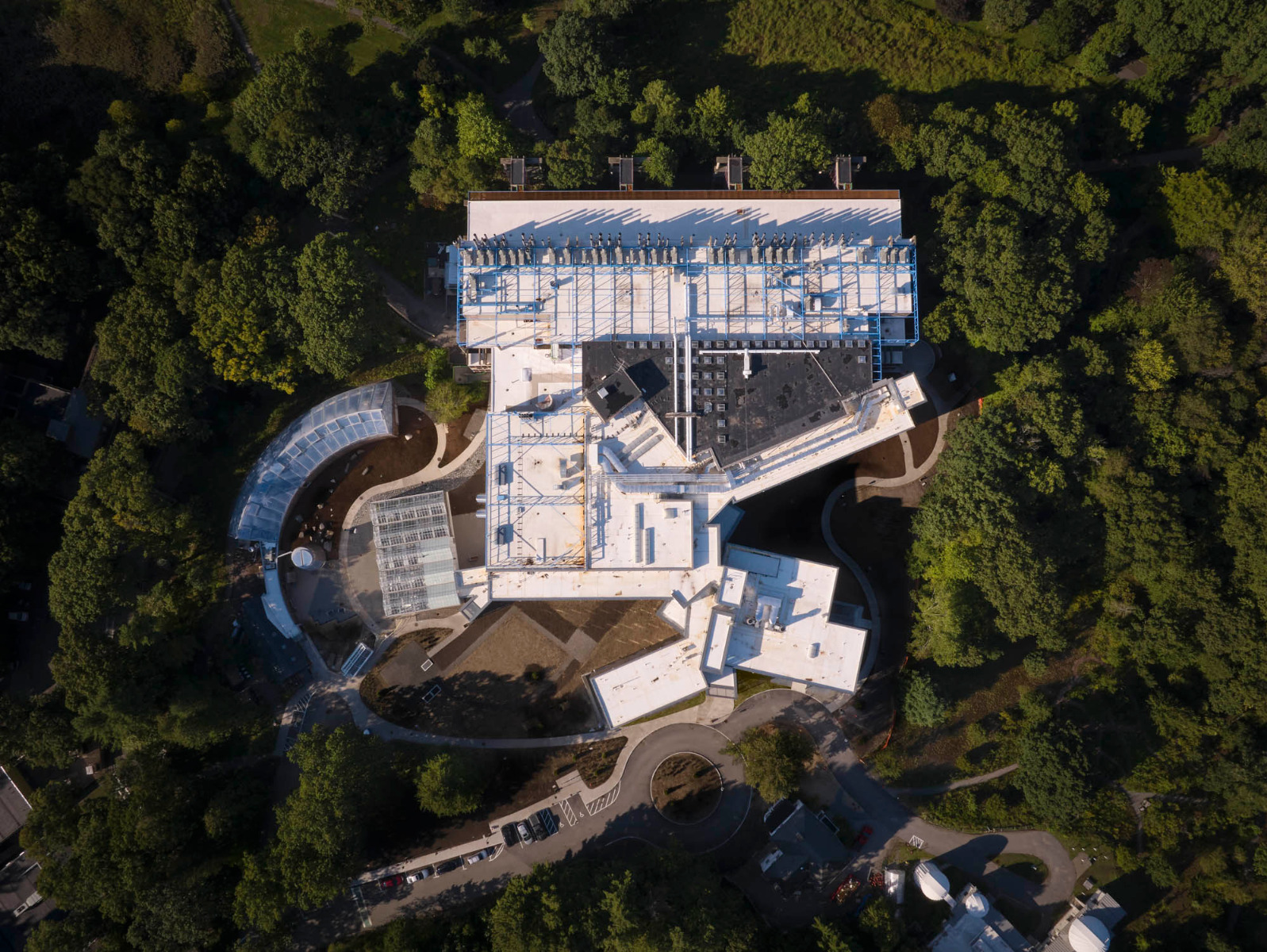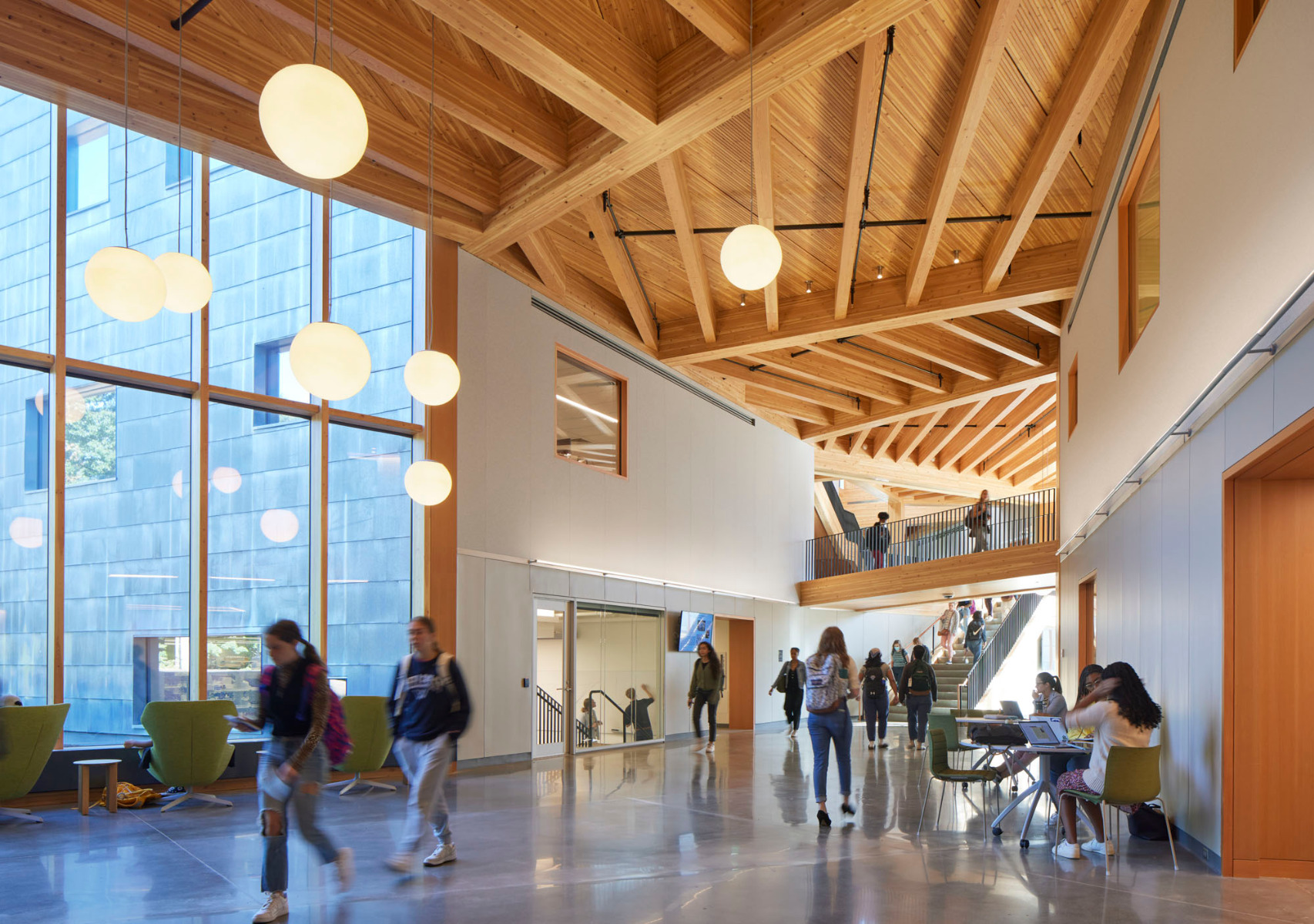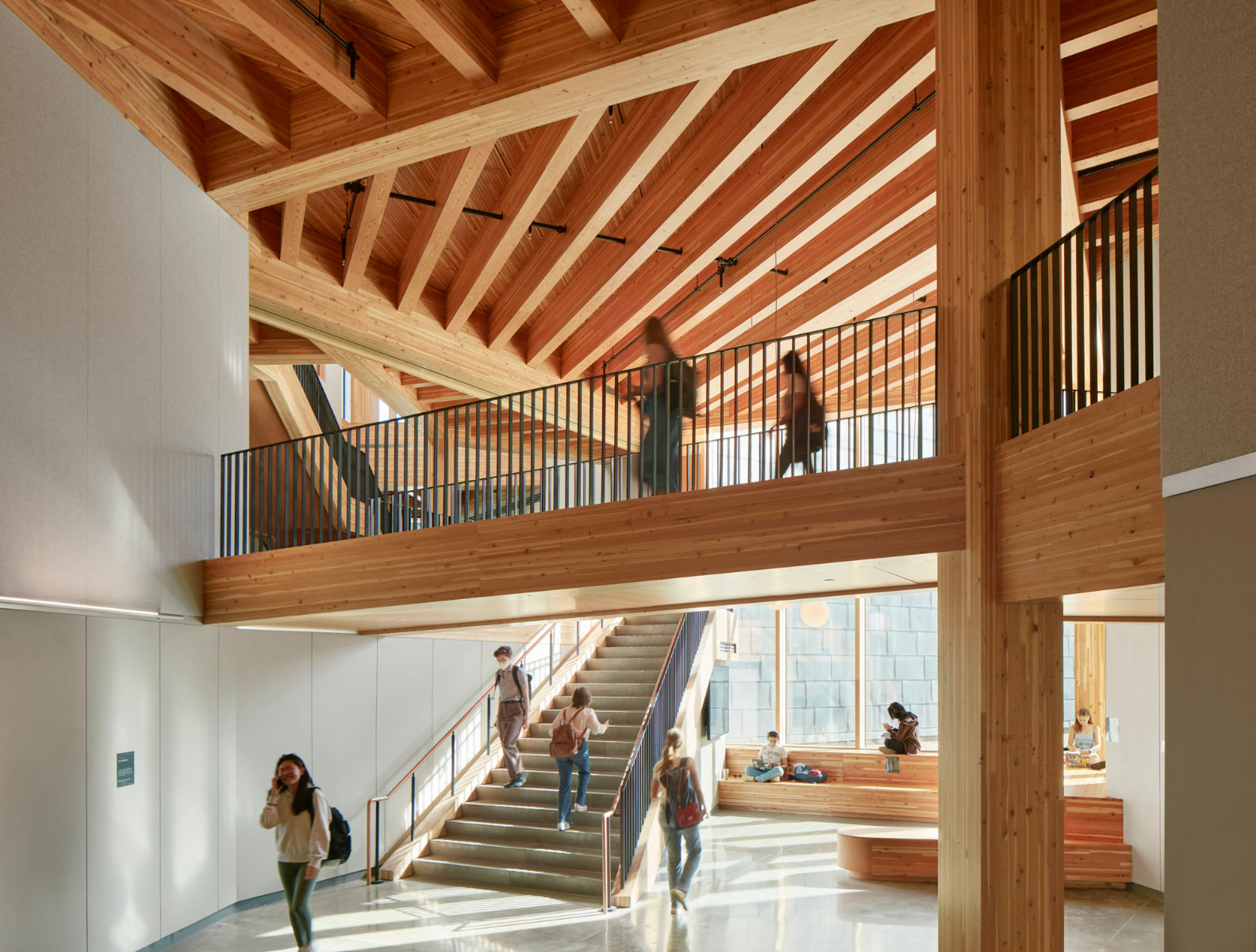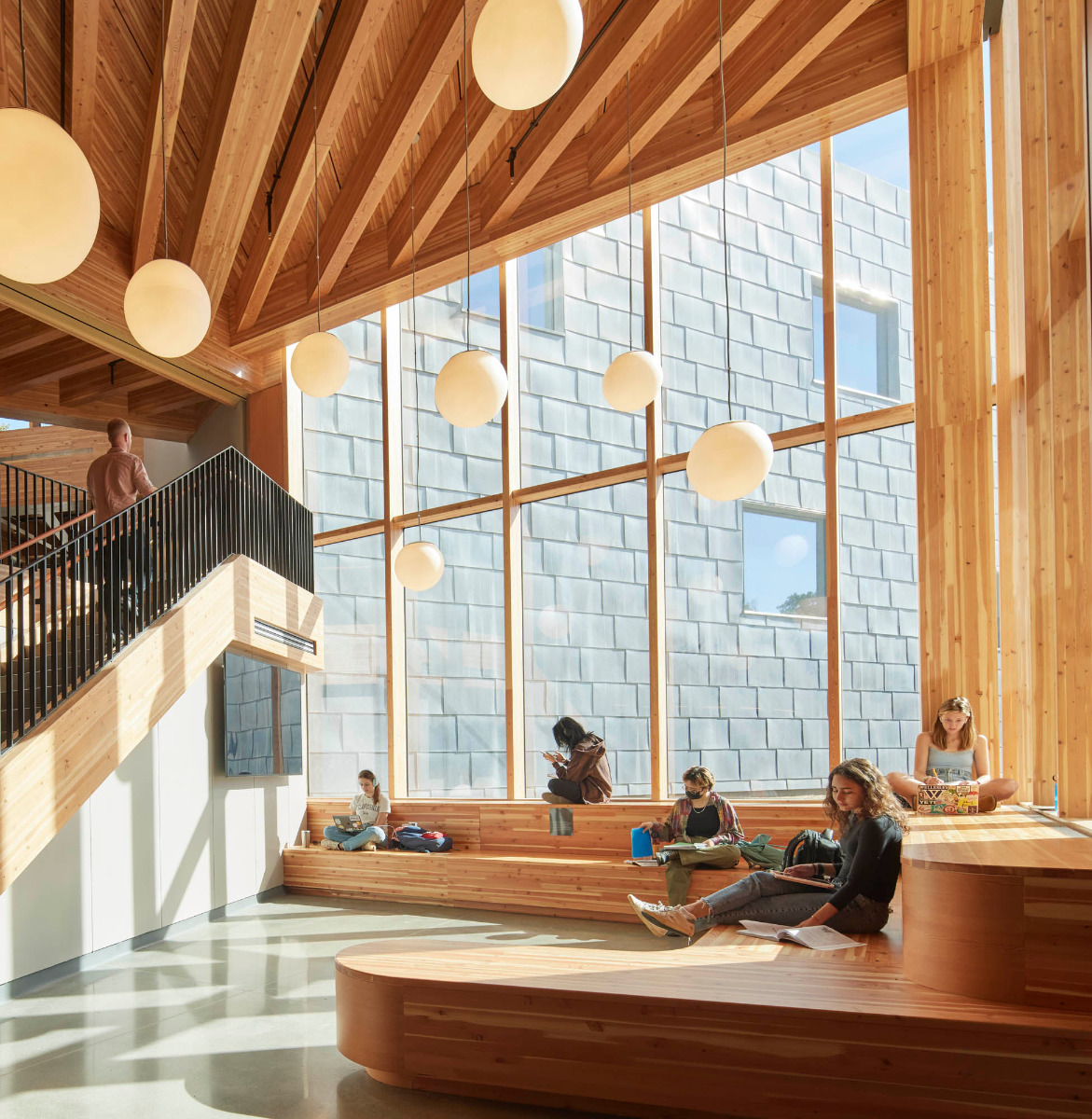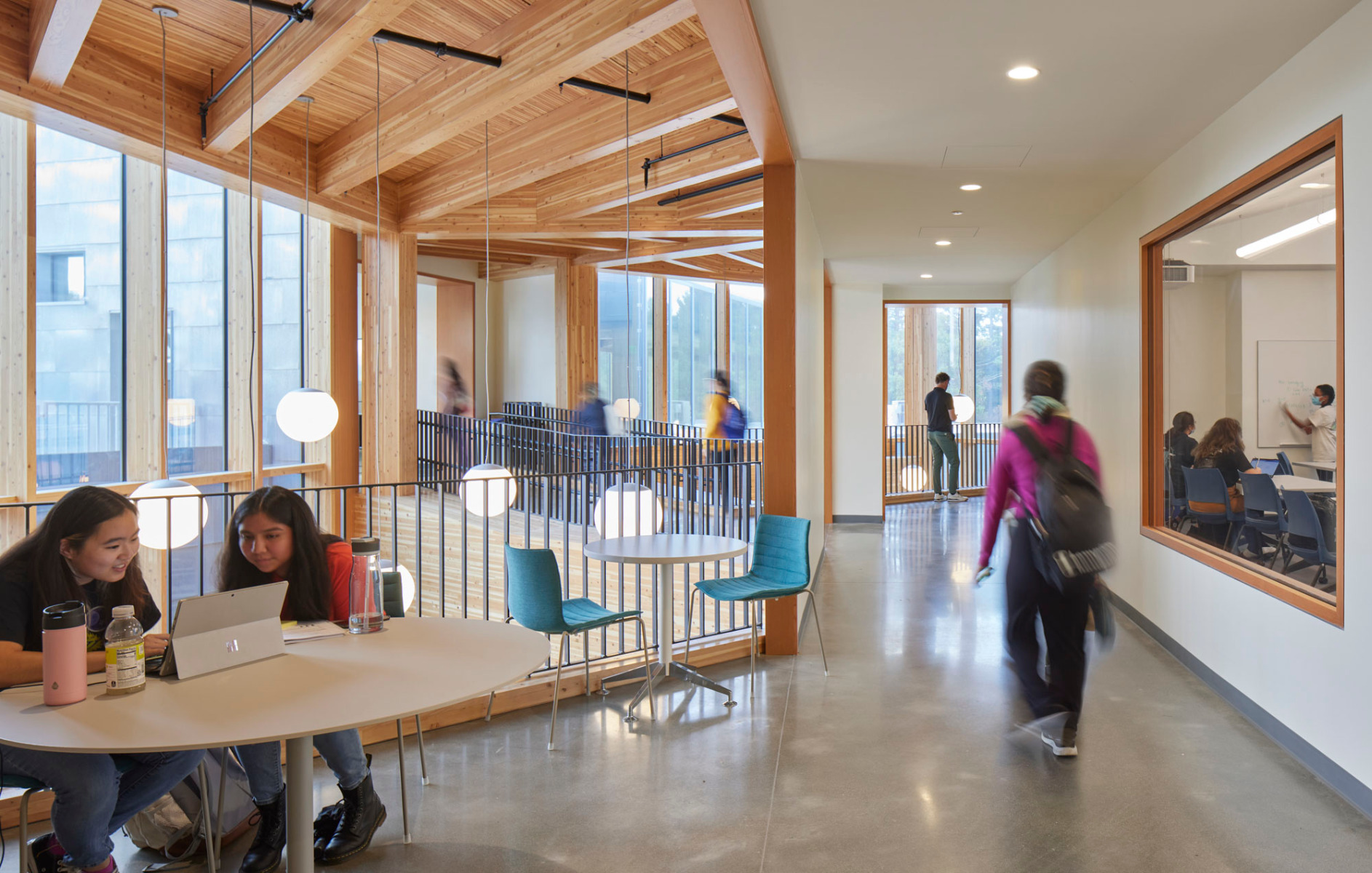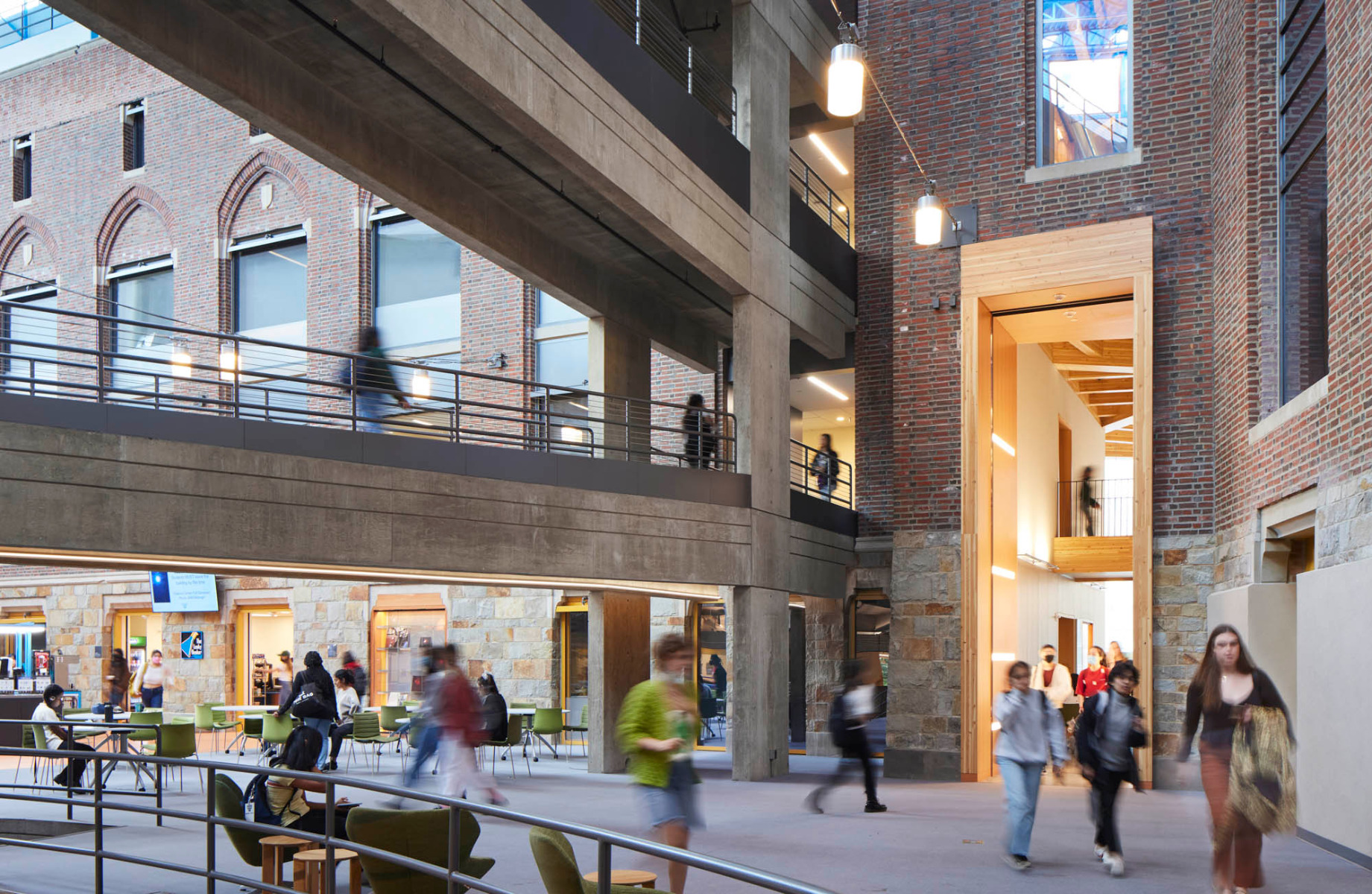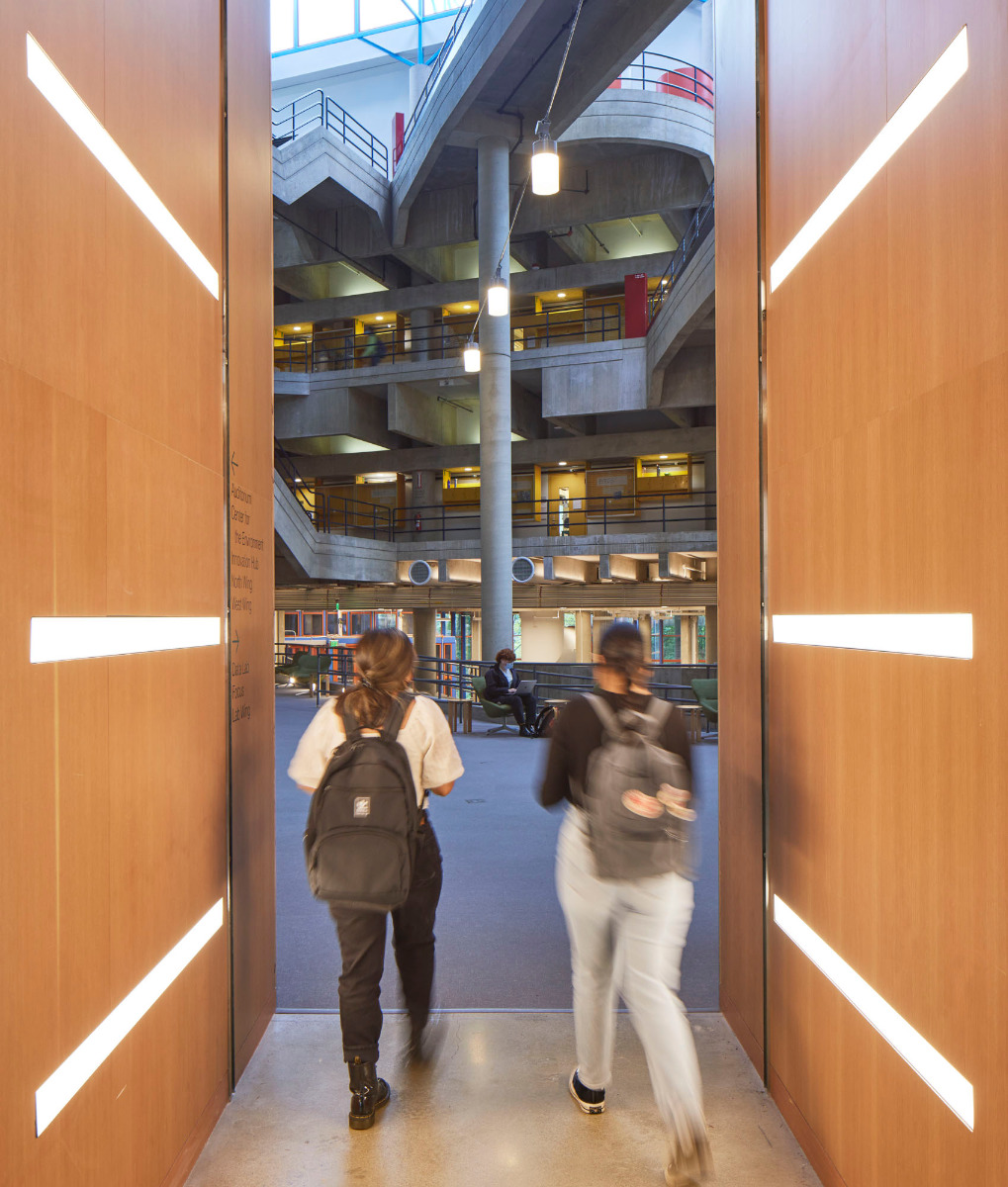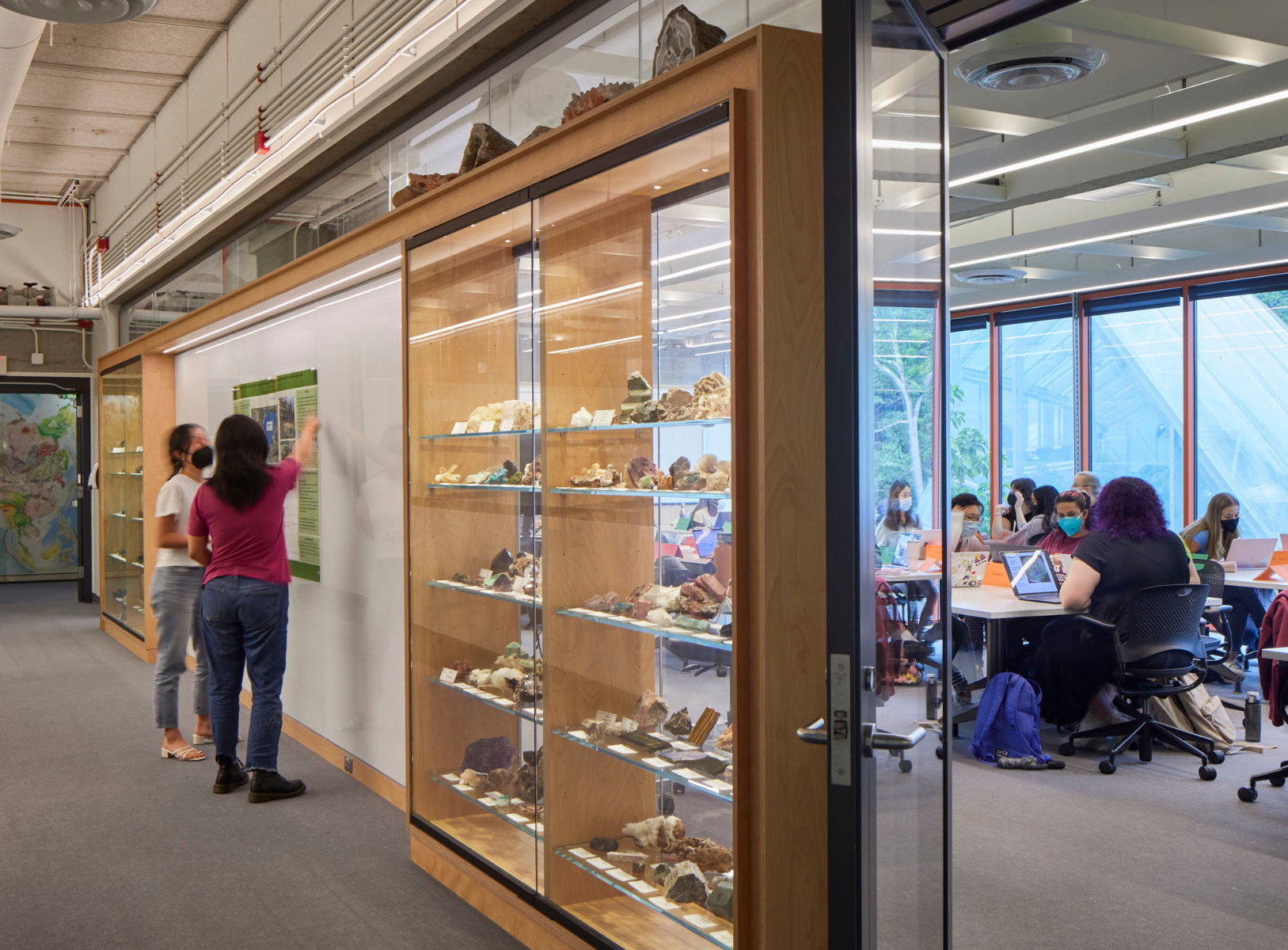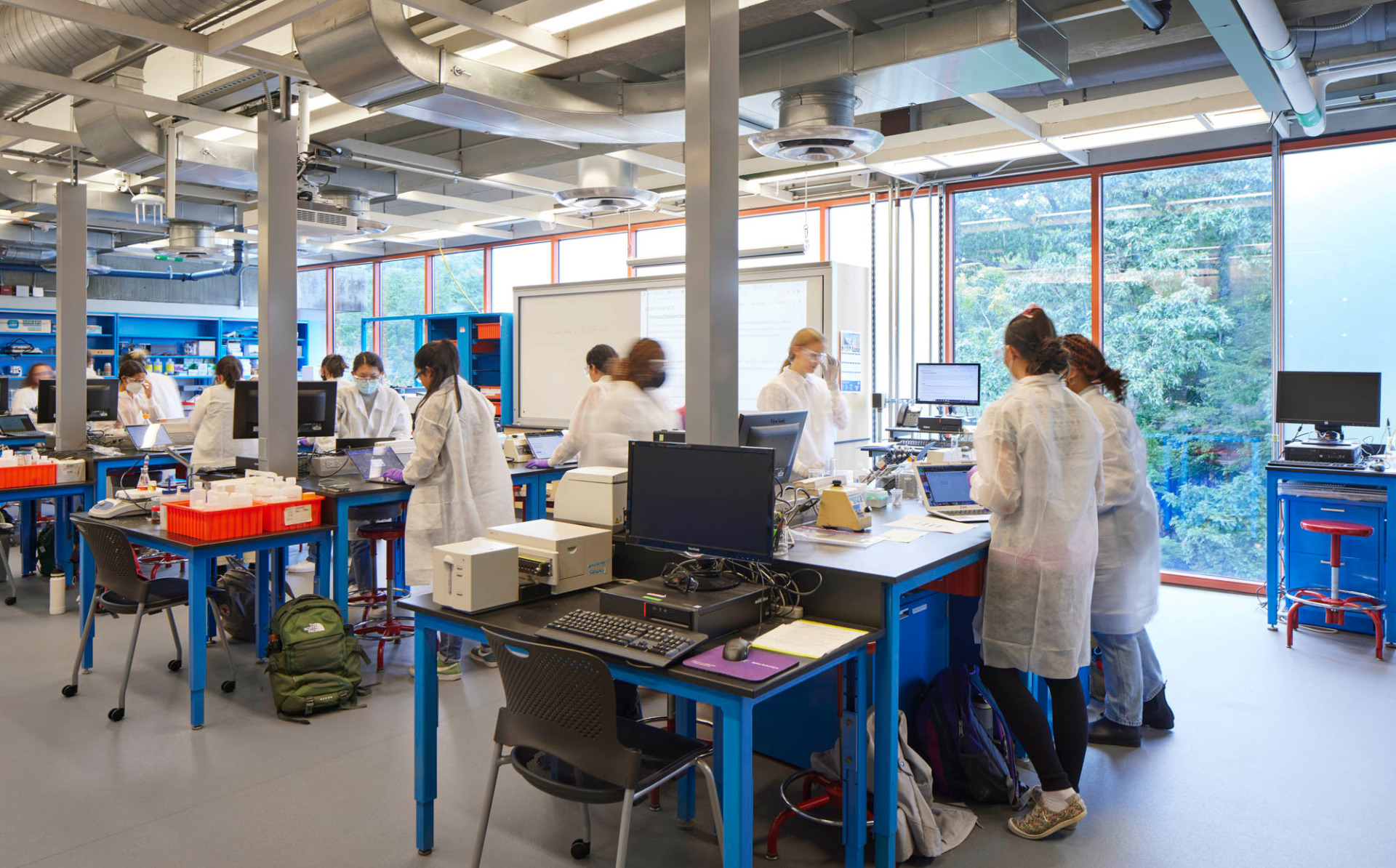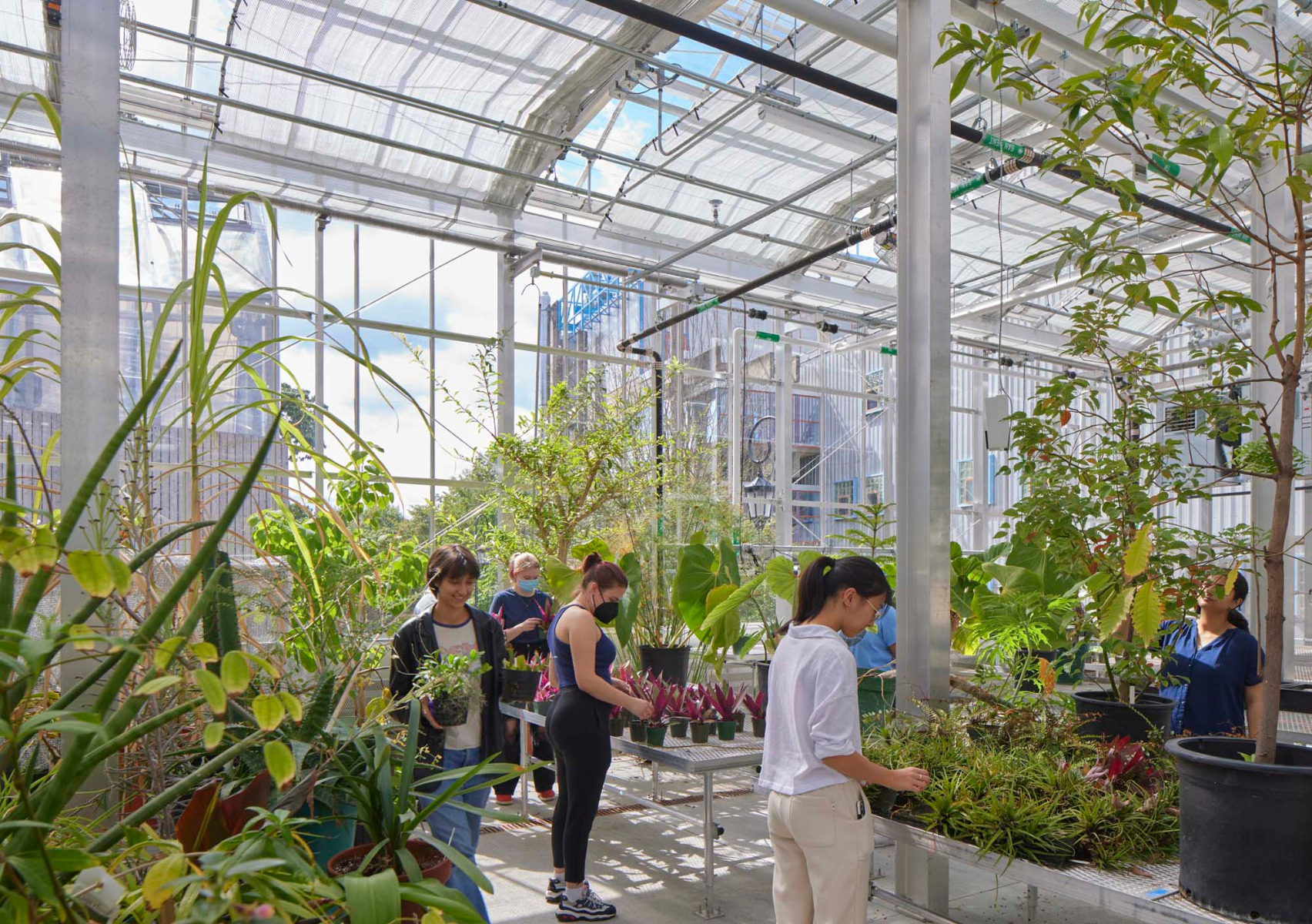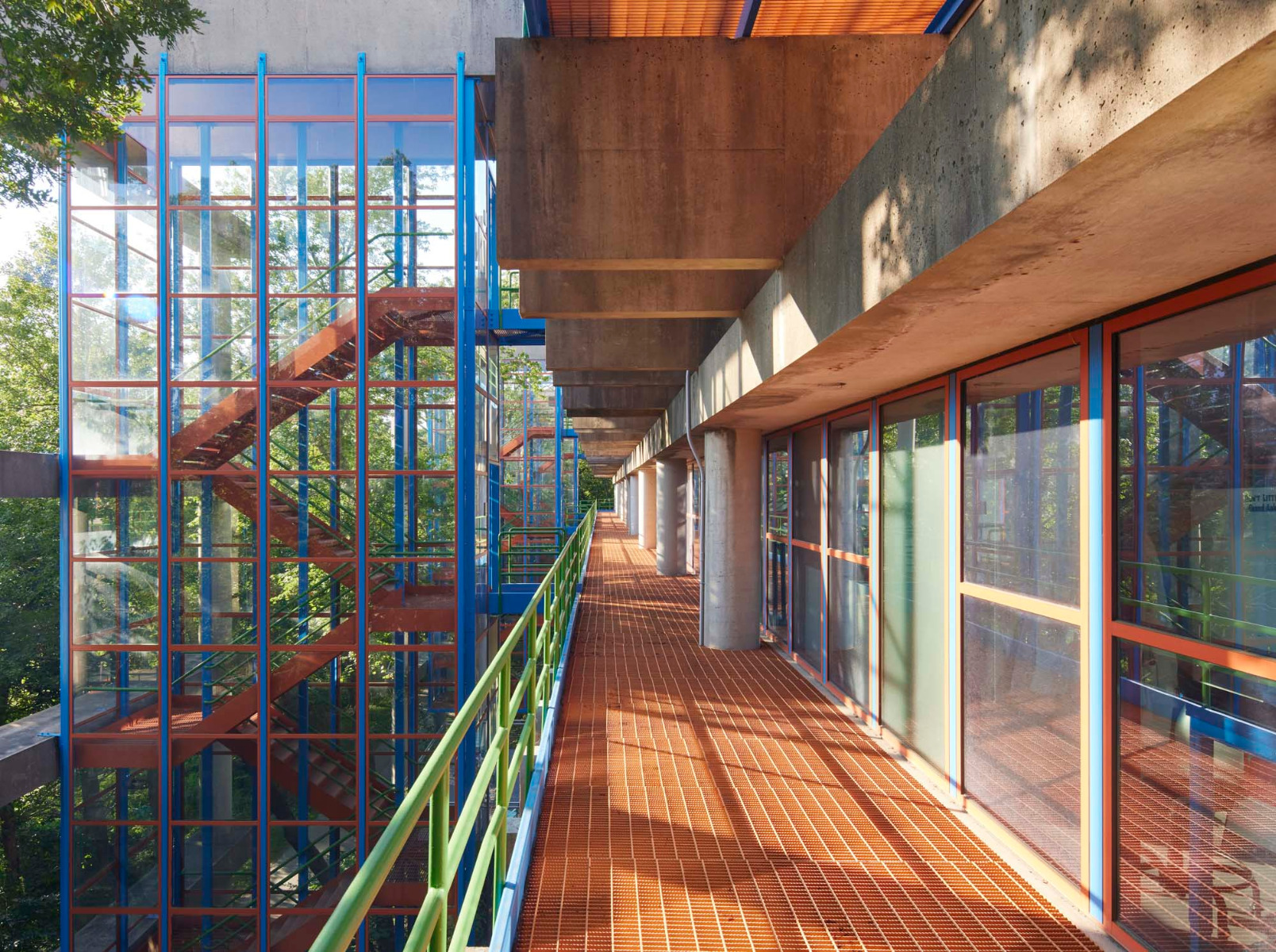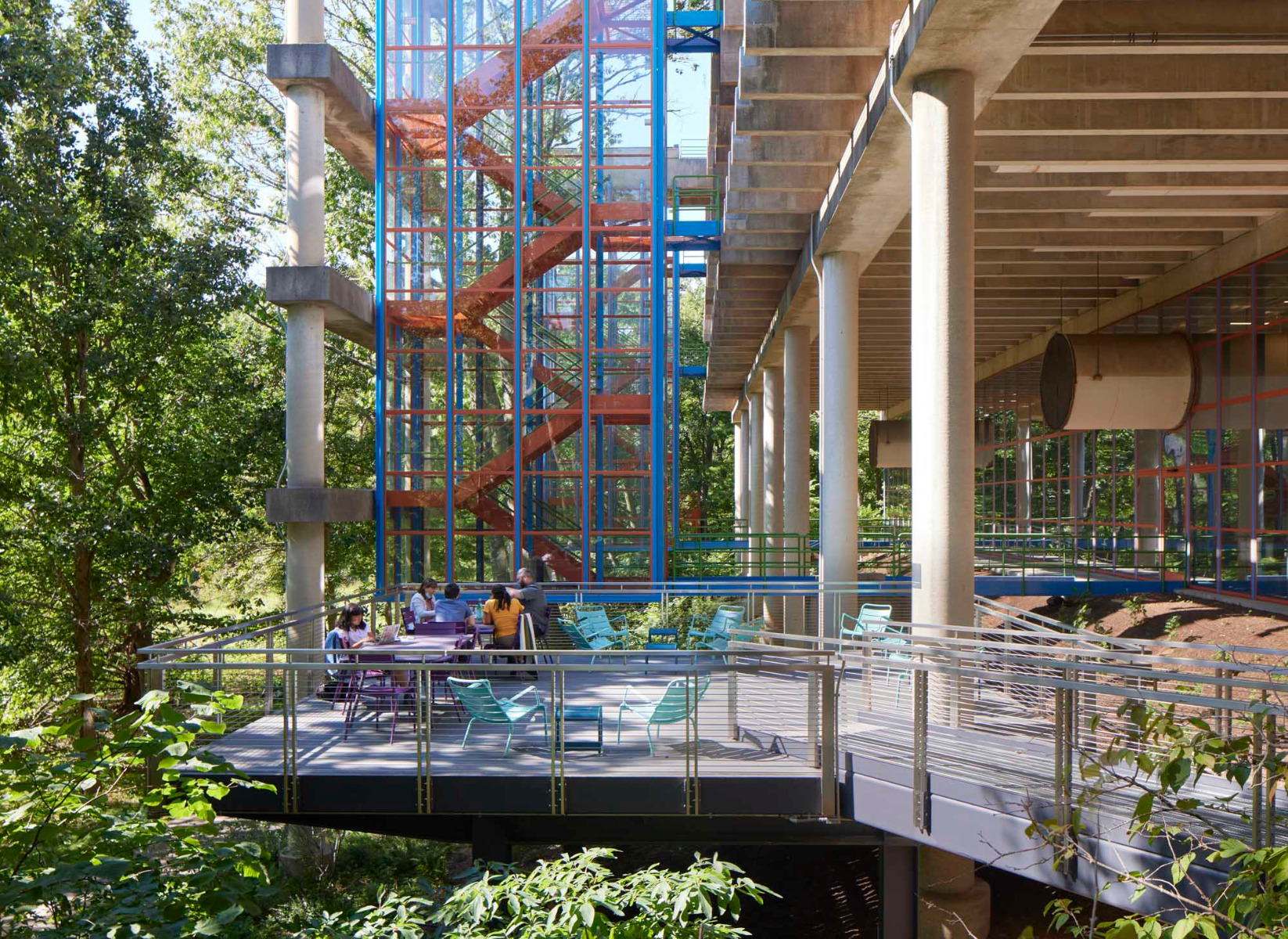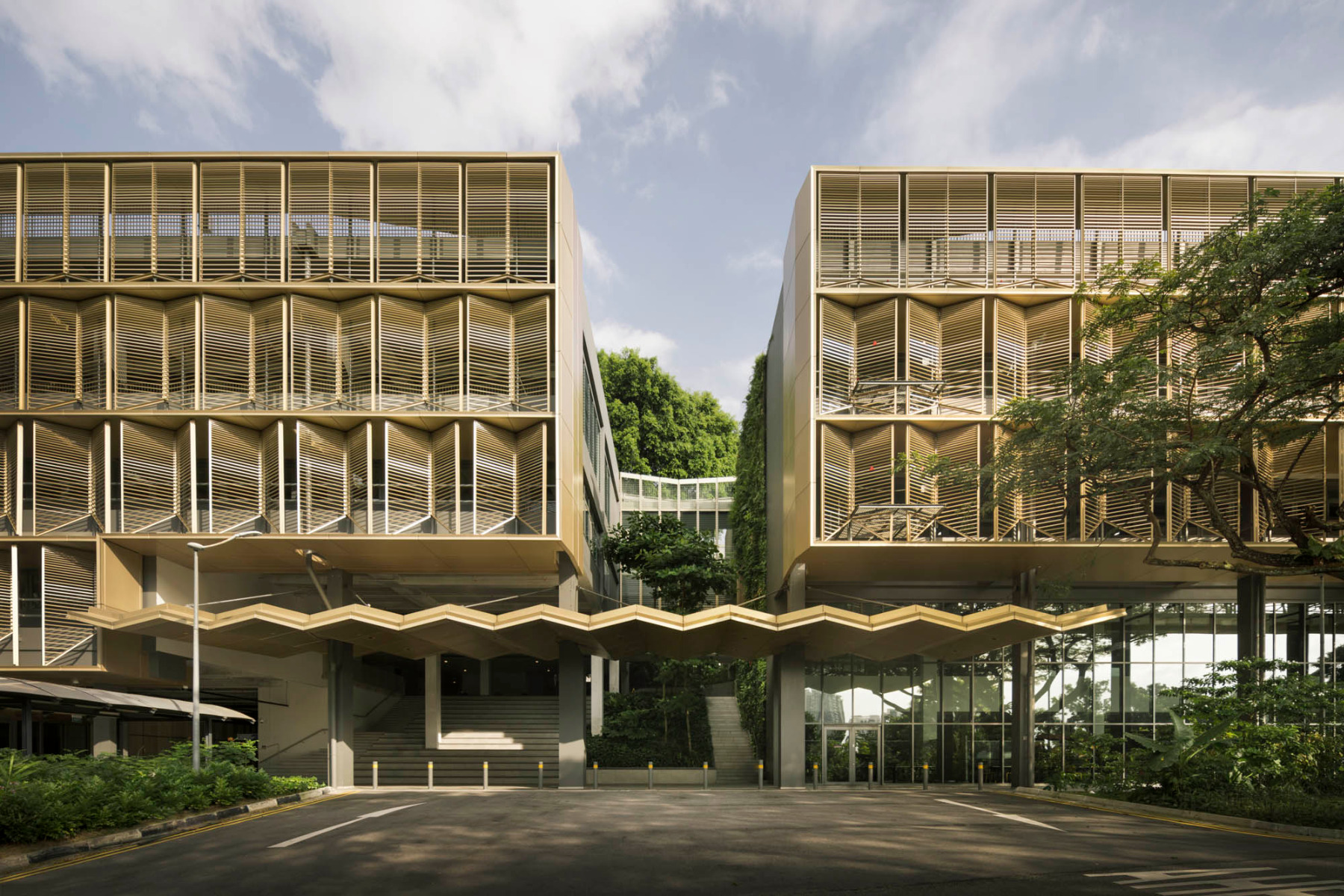Science re-networked
Science Complex by Skidmore, Owings & Merrill

Science Complex Wellesley College, © Dave Burk
Since the 1920s, Wellesley College has undergone many expansions. Over the course of the latest remodelling and expansion of the campus, the planners from Skidmore, Owings & Merrill have created a more sustainable, more flexible science complex whose new spaces and institutions for learning and research feature the state-of-the-art technology.


© Dave Burk
The strategy behind the comprehensive update was to keep the striking elements of the existing structure, which is characterized by a combination of various architectural styles.
Remodelling the existing structure
The original science centre, a Brick Gothic edifice with a Modernist addition, was in urgent need of radical renovation. Its spaces and their low ceilings, out-of-date systems and narrow floor plans would have been extremely difficult to adapt. In contrast, the expansion not only stands out due to its valuable Modernist architecture, but offers the possibility for repurposing as well.


© Dave Burk
The new complex opens onto the redesigned landscape. The gardens function as living laboratories and are created together with the students as part of the curriculum.


© Dave Burk
A further large-scale intervention was the addition of a multistorey atrium whose existing neo-Gothic brick facade reflects the interplay between old and new that recurs over the entire campus.


© Dave Burk
New building
The new building added by the architects presents a boat-shaped, zinc-clad facade. It consists of a row of pavilions that engage in a powerful dialogue with the exterior space. The interior arrangement of the pavilions enables groupings oriented towards the various areas of study.


© Dave Burk
The spine forms the Innovation Hub. The multistorey cascade of spaces connects the combination of old and new structures with a view over the surrounding landscape.


© Dave Burk
Climate-friendly building
Altogether, the remodelling work has made the campus significantly more energy-efficient. Constructive measures aimed at rainwater use, new pipes, more natural lighting and the use of wood and recycled zinc contribute to the creation of an environmentally conscious science complex that is just as innovative as the work carried out within it.
Architecture: Skidmore, Owings & Merrill
Location: Wellesley (US)


